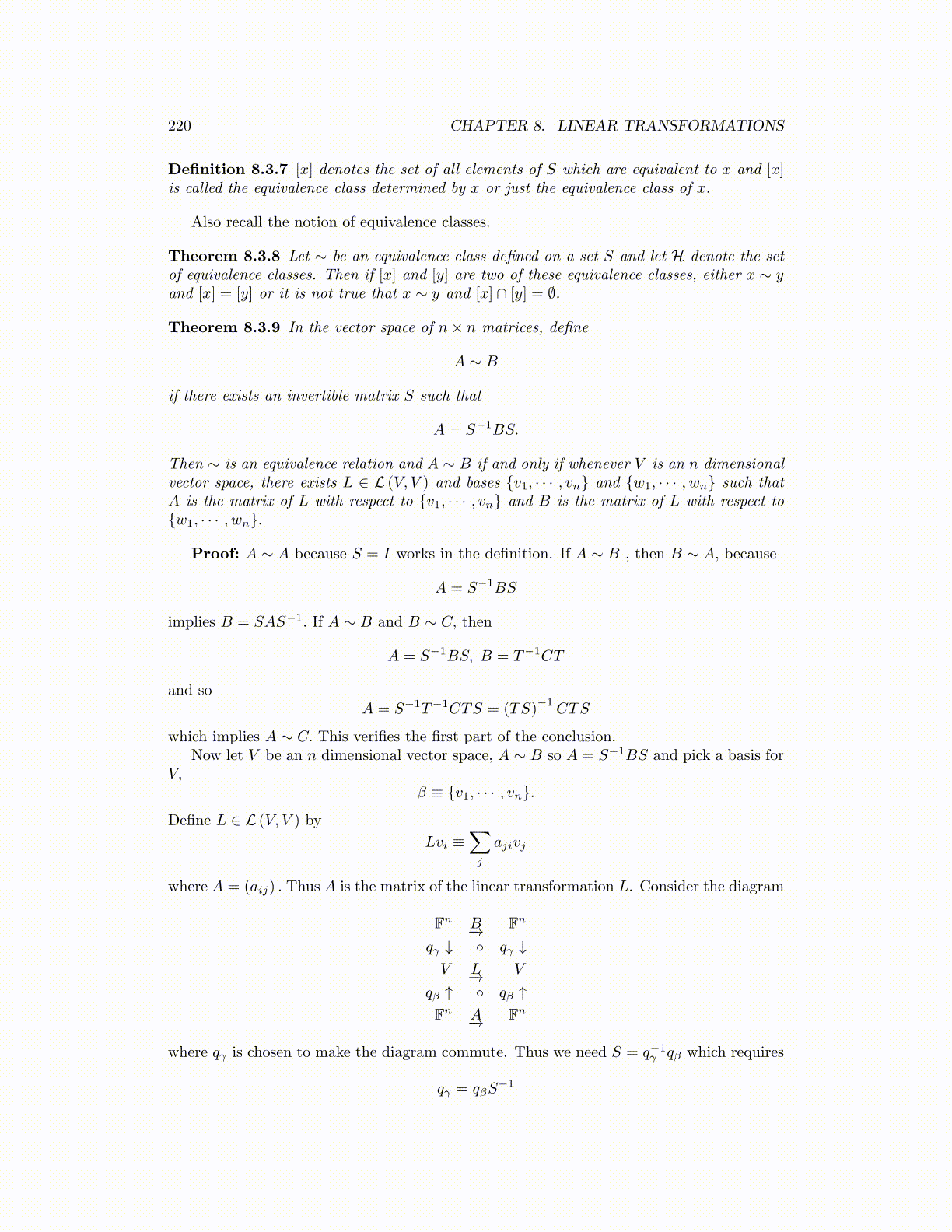
220 CHAPTER 8. LINEAR TRANSFORMATIONS
Definition 8.3.7 [x] denotes the set of all elements of S which are equivalent to x and [x]is called the equivalence class determined by x or just the equivalence class of x.
Also recall the notion of equivalence classes.
Theorem 8.3.8 Let ∼ be an equivalence class defined on a set S and let H denote the setof equivalence classes. Then if [x] and [y] are two of these equivalence classes, either x ∼ yand [x] = [y] or it is not true that x ∼ y and [x] ∩ [y] = ∅.
Theorem 8.3.9 In the vector space of n× n matrices, define
A ∼ B
if there exists an invertible matrix S such that
A = S−1BS.
Then ∼ is an equivalence relation and A ∼ B if and only if whenever V is an n dimensionalvector space, there exists L ∈ L (V, V ) and bases {v1, · · · , vn} and {w1, · · · , wn} such thatA is the matrix of L with respect to {v1, · · · , vn} and B is the matrix of L with respect to{w1, · · · , wn}.
Proof: A ∼ A because S = I works in the definition. If A ∼ B , then B ∼ A, because
A = S−1BS
implies B = SAS−1. If A ∼ B and B ∼ C, then
A = S−1BS, B = T−1CT
and soA = S−1T−1CTS = (TS)
−1CTS
which implies A ∼ C. This verifies the first part of the conclusion.Now let V be an n dimensional vector space, A ∼ B so A = S−1BS and pick a basis for
V,β ≡ {v1, · · · , vn}.
Define L ∈ L (V, V ) by
Lvi ≡∑j
ajivj
where A = (aij) . Thus A is the matrix of the linear transformation L. Consider the diagram
Fn B−→ Fn
qγ ↓ ◦ qγ ↓V L−→ V
qβ ↑ ◦ qβ ↑Fn A−→ Fn
where qγ is chosen to make the diagram commute. Thus we need S = q−1γ qβ which requires
qγ = qβS−1